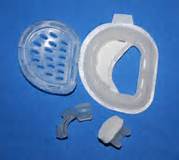Congenital ear deformities are not uncommon and are always obvious right after birth. While some would say that this is reflective of being compressed inside the womb and misshapen ears can be a self-solving issue, this is almost never the case. The concept of early ear manipulation to work with the cartilage molding capability that exists for a short time after birth is well known to offer a non-invasive and effective treatment approach. Such early efforts can help normalize the ear shape and avoid invasive and sometimes difficult surgery later.

Treatment outcomes were determined by comparing the percentage of the deformity completely corrected vs. percentage still with appreciable residual deformity. Complete correction was achieved as follows: lidding (92%), conchal crus (90%), helical rim (86%), stahl (85%), prominence (80%) and Darwin tubercle. (50%). Overall treatment outcomes were rated as excellent to good in 88%, fair in 11% and poor. (1%) Complications were superficial excoriations which occurred in about 8% of the ears treated.
While the Earwell molding system for congenital ear deformities has been around for awhile, this is the largest series reported of its long-term results. While it has been known for a long time that very early efforts at reshaping a deformed ear can be helpful, having a effective and consistent method to to do so has been lacking until the Earwell system became clinically available.
Several important points about the Earwell system is that its use must be initiated as soon as possible after birth. In this paper their average age of beginning treatment was less than two weeks after birth which is ideal. I get many a parent who calls a month or six weeks after birth to begin treatment. The success at this delayed time of treatment initiation drops precipitously as the cartilage pliability changes. The other very important point is that the Earwell device does more than just fold the ear cartilages back into a more favorable position. The genthe and sustained forces on the helical rim causes actual cartilage expansion and lengthening. This explains its success in improvement of even the more significant constricted ear deformities who have a true lack of cartilage volume.
Dr. Barry Eppley
Indianapolis, Indiana


